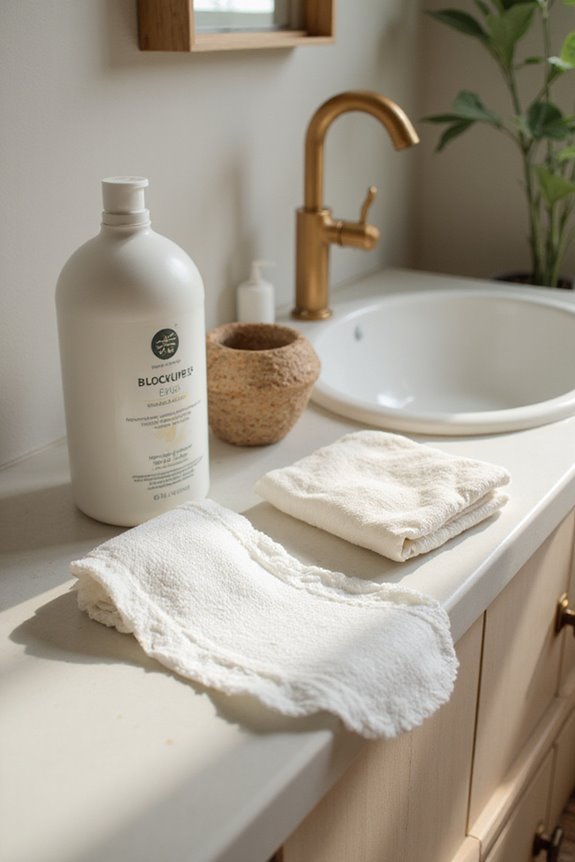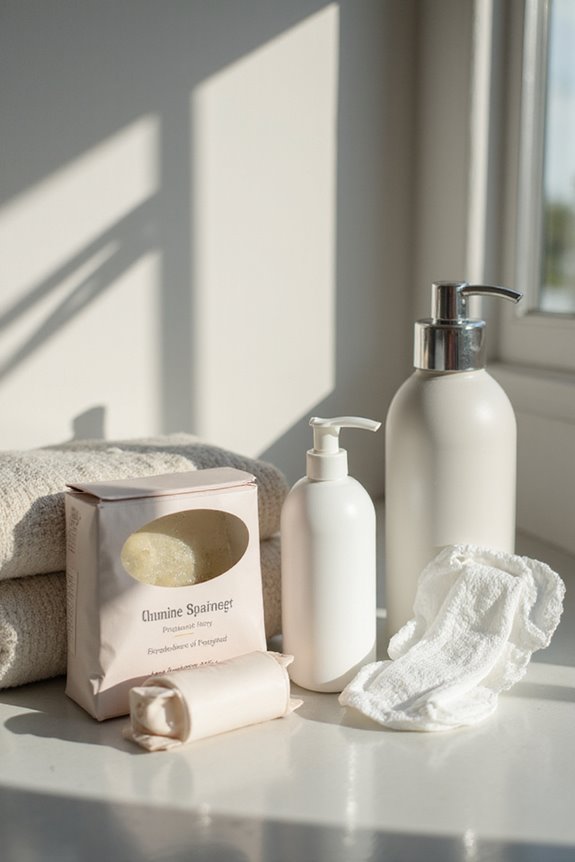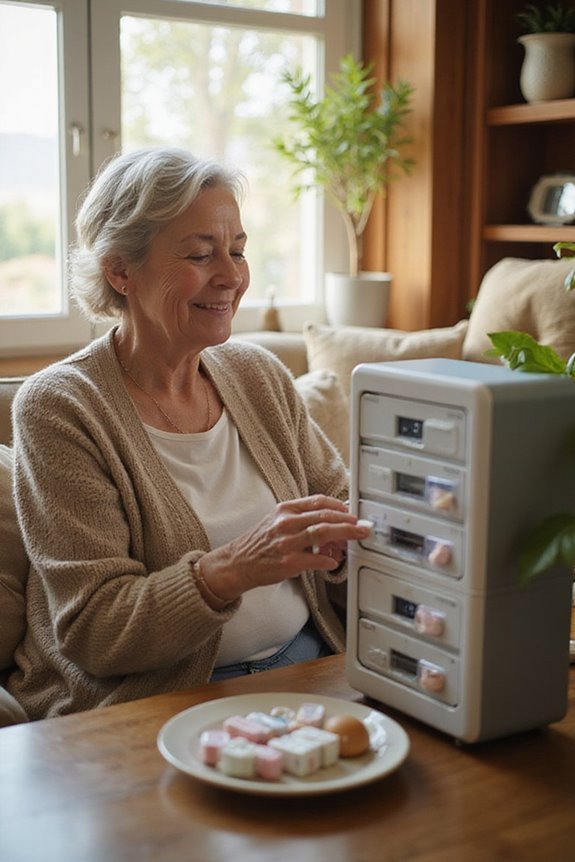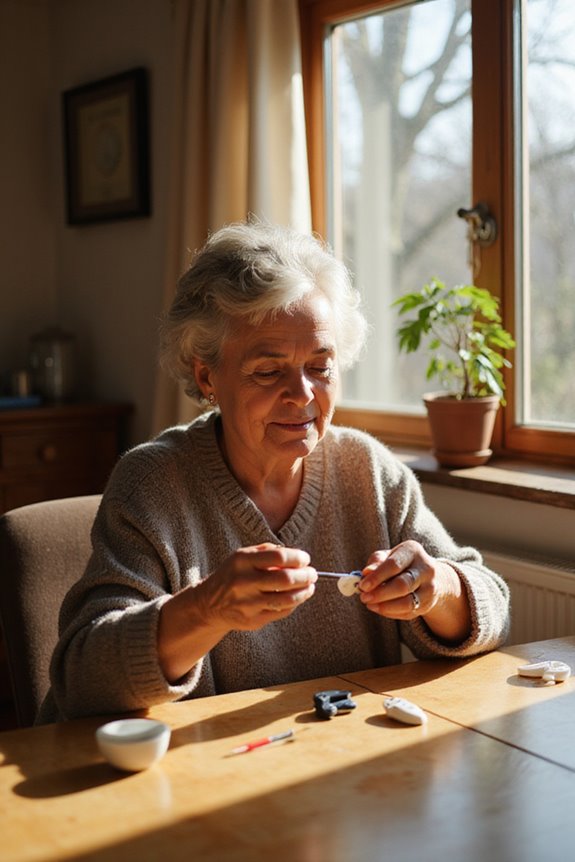The adult care products market is projected to grow from USD 10.2 billion in 2023 to USD 18.5 billion by 2032, driven by an aging population and increased healthcare spending. Key trends include high absorbency in adult diapers and innovations such as wearable technology for health monitoring. Additionally, sustainability practices are being prioritized, with eco-friendly materials and packaging gaining traction. This evolving landscape presents further insights into market opportunities and consumer preferences.
Key Takeaways
- The adult care products market is projected to grow significantly, reaching USD 18.5 billion by 2032, driven by an aging population and increased healthcare spending.
- Innovations such as wearable technology and AI integration are enhancing personalized health solutions and monitoring for elderly users.
- There is a rising demand for eco-friendly and sustainable adult care products, with consumers prioritizing natural ingredients and local ownership.
- High absorbency levels in adult diapers are becoming a focal point for manufacturers to meet the needs of aging individuals experiencing incontinence.
- Telehealth services and remote monitoring systems are increasingly supporting caregiver training and improving healthcare access for the elderly population.
Market Growth and Projections
The adult care products market is experiencing significant growth, driven by various demographic and economic factors. The market value is projected to rise from approximately USD 10.2 billion in 2023 to USD 18.5 billion by 2032, illustrating robust market expansion.
Key statistics include:
- Senior care product market expected to reach USD 675.3 billion by 2035, with an 8.1% CAGR.
- Adult care diaper market forecasted to grow from USD 50 billion in 2025 to USD 70 billion by 2033, reflecting a 5% CAGR.
This growth presents numerous investment opportunities for stakeholders. As the aging population increases, along with healthcare expenditure, the demand for innovative products will continue to rise, positioning the market for sustained success and profitability. As consumers seek high absorbency levels in adult diapers, manufacturers are innovating to meet these needs effectively.
Demographic Shifts Impacting Demand

Demographic shifts greatly influence the demand for adult care products.
- The global population aged 60 and over is expected to reach 1.2 billion by 2025, emphasizing aging demographics.
- By 2029, approximately 71.4 million Americans will be 65 or older, with nearly 70% likely to require care.
- The U.S. population aged 85 and older is projected to triple by 2060, considerably impacting caregiving trends.
- Age-related concerns, such as incontinence, affect over 65-year-olds, doubling market demand for adult care products.
- Approximately 60% of U.S. adults have chronic diseases, further increasing reliance on these products.
- As a result, products featuring advanced technologies like OdorBlock are becoming essential to address the specific needs of this growing demographic.
These shifts necessitate a reevaluation of adult care products to meet the evolving needs of an aging population.
Innovations in Product Technology

Innovations in product technology are revolutionizing the landscape of adult care products, addressing the unique needs of an aging population.
Wearable Technology
- Wearables continuously monitor essential signs, enabling real-time alerts to healthcare providers.
- These devices support seniors in maintaining independence while ensuring necessary care.
- Integration with AI enhances personalized health solutions tailored to individual needs. Assistive Listening Devices have also become a vital part of this technological advancement, improving communication for those with hearing impairments.
Smart Home Systems
- Smart home devices integrate with AI for proactive health monitoring and personalized care routines.
- Voice-activated assistants assist seniors in managing tasks and accessing information.
- These systems adapt to individual cognitive and physical abilities, enhancing safety and engagement.
Consumer Preferences and Needs

Consumer preferences and needs in the adult care products sector are increasingly shaped by various factors, including sustainability and generational influences.
- Sustainability Focus: 78% of U.S. adults now prefer eco-friendly cleaning products, emphasizing natural ingredients and water conservation.
- Local Brand Preference: Nearly 47% of consumers globally prioritize local ownership, enhancing the appeal of domestic brands.
- Generational Shifts: Gen X aligns more with younger generations on beauty preferences, while Gen Alpha drives spending in households with children.
- Product Personalization: There is a growing demand for products tailored to different age groups, supported by consumer feedback.
- Education and Awareness: Informing consumers about product usage is crucial for engagement, particularly among younger demographics. Additionally, the demand for adaptive kitchen equipment reflects the importance of accessibility in various product categories.
Distribution Channels and Retail Trends

The distribution channels for adult care products are undergoing significant transformation, largely driven by the increasing prevalence of e-commerce and shifting retail trends.
- Online Platforms: Online sales now exceed 22% of the global market share, providing consumers with convenience, anonymity, and a broader product variety.
- Hybrid Strategies: Combining online and offline channels, businesses cater to diverse consumer needs, with subscription models gaining traction.
- Retail Integration: Traditional grocery stores and pharmacies are increasingly stocking adult care products, enhancing market accessibility.
- Private Labels: The rise of private label offerings boosts competition and product variety, particularly online.
- Regional Variations: North America and Europe lead in retail integration, while Asia Pacific shows rapid growth due to changing societal norms and increased internet access. Additionally, the focus on weight capacity considerations ensures products meet the diverse needs of users.
Regulatory Challenges in the Industry
Steering through the regulatory landscape presents a formidable challenge for manufacturers in the adult care products industry.
Compliance Challenges
The 2025 regulatory environment necessitates thorough documentation and precise reporting. Organizations face significant resource constraints, with 53% reporting limitations that hinder compliance team effectiveness.
Regulatory Updates
Rapidly evolving federal and state regulations demand continuous monitoring and updates to internal compliance frameworks. Heightened scrutiny around patient data privacy and cybersecurity requires organizations to invest in advanced threat-detection technologies.
Environmental Regulations
The need to phase out substances like PFAS by mid-2025 adds reformulation challenges. Stricter safety requirements increase compliance burdens across all production stages.
These regulatory updates compel manufacturers to prioritize compliance as a fundamental operational component, affecting their overall strategies in the industry.
Economic Factors Affecting Pricing
Economic factors play a significant role in shaping the pricing strategies of adult care products. Key influences include:
- Population Aging: The elderly demographic is projected to grow to 22% by 2050, increasing demand for products addressing incontinence and mobility needs.
- Disposable Income: Rising disposable incomes in emerging markets enhance affordability for premium products, while healthcare costs drive demand for cost-effective solutions.
- Supply Chain Dynamics: Global supply chains impact production costs, influencing final prices and availability.
- Price Elasticity: As consumers become more health-conscious, their responsiveness to price changes affects market segmentation, with a clear divide between premium and value-driven offerings.
These factors collectively shape the competitive landscape, driving innovation and market expansion. Additionally, the growing awareness of absorbency levels in adult care products highlights the importance of catering to varying consumer needs.
Sustainable Practices in Product Development
Sustainable practices in product development are increasingly essential in the adult care industry, driven by both environmental concerns and consumer demand for eco-friendly options. Key strategies include:
- Utilizing sustainable materials, such as natural fibers like cotton and bamboo, to reduce reliance on synthetic products.
- Implementing eco-friendly packaging that promotes recycling and minimizes waste.
- Customizing absorbency levels in products to match individual user needs, potentially decreasing environmental impacts by up to 23%.
- Establishing waste management programs that incorporate recycling and composting, leading to operational cost reductions of up to 20%.
- Adopting water-efficient manufacturing techniques to minimize water usage.
These practices not only enhance product sustainability but also align with consumer expectations for responsible, eco-conscious adult care solutions.
Future Opportunities in Elderly Care Products
As the global elderly population continues to expand, the demand for innovative and effective care products is projected to increase considerably. By 2030, the elderly care product market is expected to surpass USD 1.3 trillion, driven by rising life expectancy and chronic disease prevalence.
Key Opportunities:
- Smart Home Integration: Devices enhancing safety and autonomy, such as AI-assisted monitoring and mobility aids, are essential.
- Caregiver Training: Increased emphasis on training programs guarantees peak usage of advanced technologies.
- Telehealth Adoption: Remote monitoring systems are projected to support over 70 million elderly individuals by 2025. The introduction of senior alert systems can significantly improve communication and safety for seniors in need.
Challenges:
– High costs and limited access remain significant barriers in low-income regions, affecting product adoption and effectiveness.
Frequently Asked Questions
What Are the Most Common Types of Adult Care Products Available Today?
The most common types of adult care products include adult briefs and incontinence pads, designed to provide comfort and security. These essential items foster a sense of belonging, supporting individuals in managing their daily hygiene needs.
How Do Adult Care Products Differ From Traditional Baby Diapers?
Adult care products differ from traditional baby diapers primarily in absorbency differences and user comfort, designed for larger bodies and longer wear. They prioritize dignity and independence, catering to the unique needs of their users.
What Age Group Primarily Uses Adult Care Products?
Adult care products are primarily utilized by senior demographics, particularly those aged 60 and older. Usage statistics reveal a significant correlation between age and the necessity for these products, reflecting the increasing healthcare needs of this population.
Are There Specific Brands Leading the Adult Care Product Market?
In the adult care product market, brand innovation and market competition drive growth, with companies like Abena A/S and Prevail® leading through advanced features, catering to diverse consumer needs, and fostering a sense of community among users.
How Are Adult Care Products Marketed to Consumers?
Adult care products are marketed with thoughtful strategies aimed at the target audience, utilizing personalized approaches and engaging content. These marketing strategies foster connections, create community, and emphasize the importance of wellness and mental health.





